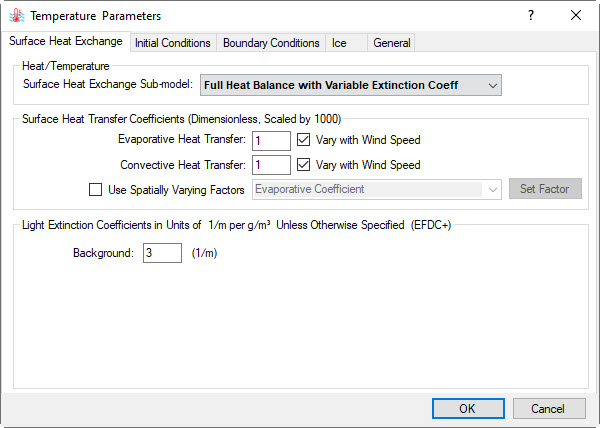The Surface Heat Exchange tab is where the user sets the Surface Heat Exchange Sub-model as shown in Figure 1. This drop-down list contains six options. Settings which that are relevant to surface heat exchange are provided in the Surface Heat Transfer Coefficient Frame and in the Light Extinction Coefficients frame, depending on which option is selected. For example, if sediments are not being simulated the Light Extinction for TSS is hidden as not applicable.
...
The ASER.INP file must be used for all of the thermal sub-models to compute the surface and bottom heat exchange processes. Also, depending on whether the current model is EFDC_GVC or EFDC+, the EFDC_Explorer + Explorer form will have different options shown in the tab.
Figure 1 Surface Heat Exchange Options.
The Full Heat Balance with Variable Extinction Coefficient option provides the user with the option of allowing light extinction to be dependent on the total suspended solids in the water column, thereby making light extinction temporally and spatially varying. The extinction factors are determined on a cell-by-cell basis for each time step based on TSS, and if the water quality model is active, based on particulate organic matter, dissolved organic matter, and chlorophyll-a as well.
...

